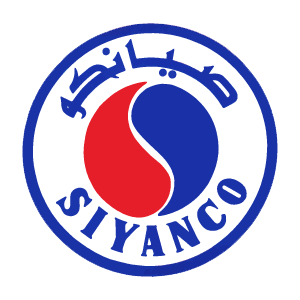OVERVIEW
Excellence in Project Management with a successful outcome is achieved through a structured process that includes multiple phases:

The process balances the key project constraints and provides a tool for making decisions throughout the project based on stakeholder values, performance metrics, established procedures and project goals.
Effective project management includes strategies, tactics, and tools for managing the design and construction delivery processes and for controlling key factors to ensure the client receives a facility that matches their expectations and functions as it is intended to function. Improvements in building quality directly contribute to reduced operational costs and increased satisfaction for all of the stakeholders. Successful project delivery requires the implementation of management systems that will control changes in the key factors of scope, schedule, budget, resources, and risk to optimize quality and, therefore, the investment. This section offers guidance for the entire team to successfully and effectively optimize the quality of a high-performance building project.
It is critical to establish the qualities of the project that are necessary to satisfy client and end user needs and expectations, once it is delivered and in use. Value for the money in construction requires completing a project on time, on budget and to a level of functionality that meets the determined needs. A well-programmed project will continue to provide value and meet user needs throughout its lifetime and will contribute positively to the environment in which it is located with a wide range of social and economic benefits. Early investment in planning, programming, and design can help deliver these benefits and avoid unnecessary costs and delays.
Contemporary institutions and organizations are increasingly realizing that traditional forms of management—based on the same approach to every project—cannot meet the needs of today’s economic, social, and business environment. Additionally, the processes can be streamlined based on technologies and efficiencies not previously available. The responsibility for delivering a project as planned rests with the entire team. When evaluating options, the whole-life value should be considered and not limited to the short term initial investment. Factors that affect the longer term costs of a facility, such as maintainability, useful service life, and resource consumption should be integrated into the decision matrix.
Project Delivery Teams — How to assemble and effectively manage the project team.
Risk Management — Provides details on how risk analysis is used as an organized method of identifying and measuring risk.
Building Commissioning — Provides an overview of commissioning drivers, benefits, goals, and principles for improving building quality
Initiation And Planning
Thoughtful and clear understanding of project goals and needs (Project Scope);
Definition and agreement of stakeholder roles and responsibilities;
Master planning to accommodate all participants’ activities and needs in achieving the project goals;
Identification and prioritization of project risks and development of a risk mitigation plan;
Consideration and evaluation of project design and delivery and process alternatives;
Identification of other factors, including.
- Site requirements;
- Funding requirements;
- Budget authorization cycles and/or financial impacts; and
- Project phasing.

There are tools available that help define the goals and objectives for the project that let all stakeholders have a voice in making the project successful. The risks associated with making mistakes in this part of the process are great, since their impact will be felt across the project development process and in the final project results. For more information, see links below in the Additioanl Resources section.
DESIGN STAGE MANAGEMENT

Once a design team has been agreed upon and assembled, the owner needs to coordinate and manage the project’s design phases. Design management requires the oversight of schedules and budgets; review of key submissions and deliverables for compliance with program goals and design objectives; verification of stakeholder input for inclusion; verification of construction phase functional testing requirements; and appropriate application of the owner’s design standards and criteria. This stage should also define the criteria for assessing quality measurement to ensure the project’s success. Determining appropriate goals and objectives at the beginning of the process, during a visioning session, and measuring their implementation over the life cycle of building and construction has been proven to increase overall building quality and reduce project costs and timing to delivery.
DELIVERY METHODS
There are many approaches to achieve successful project design and construction. The Delivery Methods are driven by the project’s scope, budget, and schedule. Some of these methods include Traditional (Design/Bid/Build), Integrated Delivery Process (where all stakeholders have a financial incentive to work together to produce the desired results), CM (also called CMc, or Construction Manager), Design-Build, Bridging, Lease/Build and Lease Buy Back. The selection of a delivery method will in turn influence the team composition, schedule, budget, and management plans to be followed throughout the process.

SCOPE IDENTIFICATION MANAGEMENT

Project scope is the work that must be performed to meet a client’s program goals for space, function, features, impact, and level of quality. Scope management sets the boundaries for the project and is the foundation on which the other project elements are built. From the beginning it helps identify the work tasks and their requirements for completion.
Effective scope management requires accurate definition of a client’s requirements in the Planning and Development stage and a systematic process for monitoring and managing all the factors that may impact or change the program requirements throughout the project design and construction phases through delivery of the finished project.
A Project Management Plan (PMP) documents key management and oversight tasks and is updated throughout the project as changes occur. The plan includes definition of an owner’s program goals, technical requirements, schedules, resources, budgets, and management programs. It also provides a vehicle for including efficiencies in the design and construction phases of all buildings. It will also serve as the basis for completed construction documents and outline the commissioning plan for finished execution.

